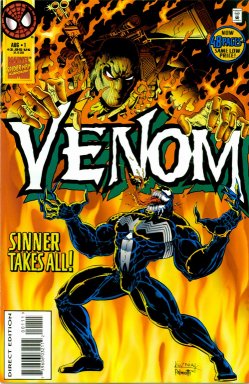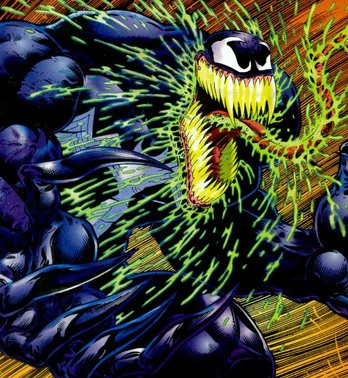I saw an interesting conversation on the blogohedron last week. It was about criticism and its place in art. It started here, with Johanna’s review of How to Make Webcomics, which was written by Brad Guigar (Evil Inc.), Dave Kellett (Sheldon), Scott Kurtz (PvP) , and Kris Straub (Starslip Crisis). It’s an overall positive review, though she dings it for proofreading errors (which is totally fair and most likely warranted), but the controversy (or whatever you want to call it) arose from this paragraph:
Oddly, the promotion chapter doesn’t mention either press releases or getting reviews, both sources of free coverage; instead, dealing with critics is covered in the audience chapter. The author of this section, Dave Kellett, breaks them into four categories and says, “each one can be diffused or made impotent by kindness and politeness.” So the goal here is not to listen, but to deflect. And that’s reflected in his categories; not one covers someone pointing out a legitimate flaw or place for improvement in the work. In other words, he doesn’t think critics are ever right. (The categories are the person who’s mean without meaning to be and really loves the comic; nitpickers correcting “useless details”; the hater; and the troll. This section, by the way, was the first piece of the book I read — it’s where the copy I was browsing fell open when I first picked it up. Fate!)
Scott Kurtz talked about the review here, and says this:
I’m not sure how I ended up in so many tug-of-war competitions with bloggers, where the outcome of our match determines the superior position: creator or critic. But it seems to be cropping up again. There is a strange sense of entitlement, an eerie assumption of an unspoken working relationship that I am happy to inform does not exist. Why we insulate ourselves from the notion that the external critic can EVER be right, is because their critique is moot in regards to the progression of our work.
Click through for the rest of the post. I’ll have some excerpts here, but not the full text.
I’ve got kind of a huge problem with this statement. The biggest problem I guess is that no one has ever said this in the history of ever. If anyone has actually said it, they were probably a pretty terrible critic.
I don’t think that any critic believes that he or she is a part of the direct creative process. Indirect? Yes. Direct? No. Critics do not exist to tell you how your work should go as you’re making it. They exist to tell you how you work has gone after you’ve finished. My mental image of a critic is still that first bit from History of the World Part I. The caveman paints on the cave wall, his friends and family praise it, they cheer, and then the critic walks in. And the critic pees on the drawing.
It’s probably a bad example, because the critic pees on the work and I can’t think of anything that’s really worth all that trouble, but it fits my view of a critic. Critics come along after the work is done and judge it. Whether they’re judging the literary worth of the work or just whether or not it made them laugh, they’re there to judge the finished work in whatever form it may take. Whether they pee on it or praise it is up to them.
Kurtz goes on to say–
Think about Star Trek and the Prime Directive. Sometimes, civilizations take a left turn in their natural progression and things go tits up. Sometimes there is a dictatorship or a famine or a plague that is going to steer this civilization into trouble, but the crew of the Enterprise CAN NOT ACT. They can NOT interfere. To interfere with those hardships would be to damage the natural progression of that civilization.
I feel like this is a labored metaphor, but maybe that’s just because I’ve never been a trek fan and had to actually ask someone about the Prime Directive. Anyway, his point here, boiled down and hopefully not misrepresented, is that you can’t interfere at all in the creation of art because that will kill the creativity inherent in it.
Again, I can’t agree. I think he has half a point, here, but feedback is important in the creation of anything. The best teacher I ever had was my senior year IB English teacher who wouldn’t hesitate to hand you a paper back with “rewrite this entire terrible thing” scrawled across the top. Critics exist to point out what you have done that didn’t work. It can give you pointers on what’s succeeding and what’s failing with your audience.
No critic is going to, or deserves to, stand over your shoulder while you’re at the drawing board or your typewriter and go, “Hey hey, hold up! You should change this word here and that line is way too heavy. Lighten that up and try this specific brush. Also make his cape blue.” That’s not why critics exist.
It might just be the critics I read, but I don’t get a sense of entitlement from any of them. It’s more about reading a book and giving your opinion on it. These opinions come in a lot of different forms, be it free association, measured responses, retailer-oriented, rambly new journalism, fairly highbrow, irreverent, worthless fanboy/fangirl screaming at the heavens (too many examples to count), or whatever. It’s up to the artist to read these and decide which ones are valid and which are not. Some of them may valid, all of them may be valid, or none of them may be valid.
The trick is being discerning. Not everyone’s opinion is going to make sense. Discounting the idea that any critic can ever be right seems kind of silly. No one is perfect yet, which Kurtz seems to agree with, but how exactly do you figure out what you did right and wrong? I’ve had things that I think work that turn out to be opaque and terrible. I’ve read interviews with creators who have had things pointed out to them that they never would’ve realized otherwise. Alternate points of view are important.
It’s not that we don’t realize we’re making mistakes. It’s not that we’re oblivious to the fact that our work is imperfect. But if we play it safe and never risk those imperfections, then we’ll never grow as artists. Ultimately, we can’t chart our course based on what our readership or critics thinks is working. We have to go with our gut.
Kurtz seems to be thinking that critics exist to encourage (or force) artists to work inside little boxes and never grow. “Nine panel grids or death! That person better be five heads tall! Why isn’t this three act structure?” There are critics who do that, yeah, but they aren’t the end-all, be-all. Honestly, I don’t even think those critics are any good.
This is kind of how I approach reviewing. I’m not there to try and diminish it, so much as to try and spot what went right and what went wrong. Sometimes comics outstay their welcome. Sometimes clunky dialogue kills an otherwise fun story. Sometimes someone writes a story where two adults with superpowers don’t realize that they’re upside down until eighteen pages in. Sometimes you get a sublime mix of words and art like JLA: Classified 1-3.
If anything, the critic should be a help to the creator. It is something the creator can go to, check out, and judge himself. Maybe they have a valid point. Maybe something wasn’t as clear as he thought it was. Maybe he’ll find something to take away from it, maybe he won’t. That’s the luck of the draw, I guess.
Recently, I called Mike Krahulik to compliment him on a new coloring technique he had used on a recent Penny-Arcade strip. I opened my phone conversation with the following statement: “Mike, Ignore all emails about the new coloring. It’s awesome. Pursue it.” But it was too late. He had already read all the mail and had been sufficiently discouraged enough to just drop the matter. “That’s what I get for trying to innovate.” he said to me.
He was joking, but there was some truth to his statement.
And that’s why there is no chapter in our book on when to accept that, sometimes, the critic is right.
This is kind of a terrible anecdote, though. Kurtz liked something that Krahulik did, other people didn’t, and Krahulik already decided to quit it, deciding that it wasn’t worth the hassle. I’m not sure exactly why that is why there is no chapter on when to accept that, sometimes, the critic is right, but okay?
It did illuminate one thing for me, though. It made me realize that Kurtz holds fans and critics to different standards. Critics exist to give negative feedback and fans exist to give positive feedback. It’s a thoroughly false dichotomy, and kind of an intellectually dishonest one, as well. What Kurtz told Krahulik is just as much criticism as what JDC displayed in her review of the book. It’s offering a critical opinion of a work. The idea that positive feedback is valid while negative feedback shouldn’t be paid any attention is a terrible one. Feedback is feedback, whether positive or negative, and both can help to grow a work.
I’ve got a friend who just screened his movie, Yeah Sure Okay. It’s something new and innovative, both for him and possibly for movies in general. I know that he co-created it with that idea in mind. After the screening, he went around soliciting feedback. What worked, what didn’t, what was hokey, what was awesome, and so on. He did it because he needs to know if he succeeded at his goal, and if he didn’t succeed, what parts weren’t hitting with the audience. He didn’t decide that he should never listen to critics because critics will alter the natural course of his creativity. He decided that it’s important to get feedback so that you can be sure that you’re on point.
That’s what the critic is for.




